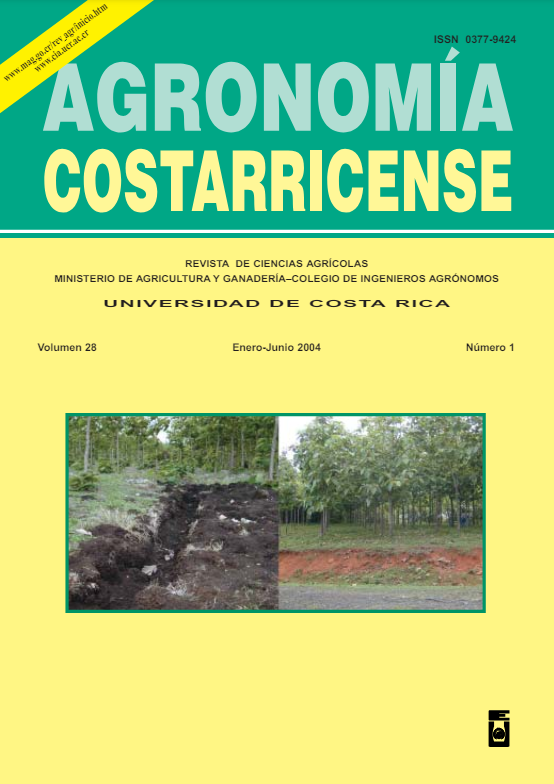Abstract
A soybean (Glycine max L. Merr. var ‘CIGRAS-06’) plot of 2.4 hectares, grown underhigh rain fall and temperature conditions in La Virgen, Sarapiquí, on an acid (pH 4,78) and low fertility soil, yielded an average of 4.8 t ha-1 of dry matter, when plants were harvested for forage at the R6 (full seed) stage of development. This productivity is low when compared to that obtained in Guanacaste and San Carlos, where soil and climatic conditions were favorable for soybean production. Chemical composition of whole plants was 20.2% protein, 6.7% fat, 5.5% ash, 42.2% neutro-detergent fiber and 25.4% non-fiber carbohydrates. The proportion of dry weight of leaves:pods+seeds:stem+petioles was 24:39:37, respectively. An economical analysis of these results indicates that costs of soybean silage before and after silage for one month were 0.02 and 0.03 US $ kg-1, respectively. The results of this research indicate that even under the adverse conditions where this study was conducted, is feasible to exploit the nutritional quality of soybean for dairy cattle feed at a relatively low cost and without the inconvenience and the high investment in machinary and equipment required to produce soybean seed in the wet tropics.
##plugins.facebook.comentarios##

This work is licensed under a Creative Commons Attribution-NonCommercial-NoDerivatives 4.0 International License.
Copyright (c) 2024 Agronomía Costarricense


